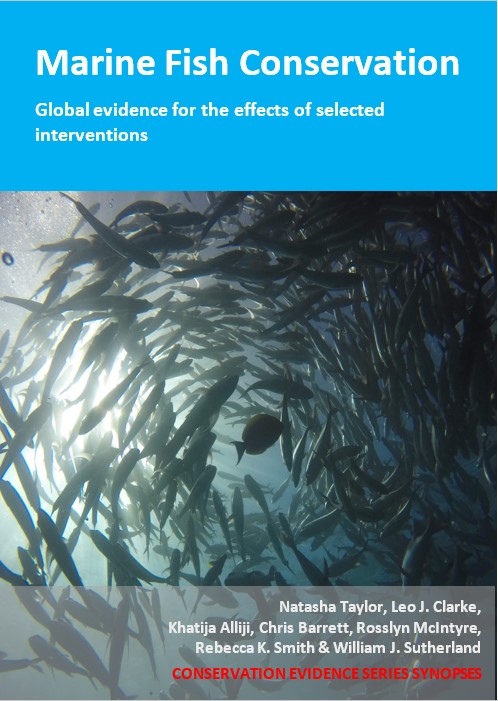Introduce catch shares
-
Overall effectiveness category Awaiting assessment
-
Number of studies: 2
View assessment score
Hide assessment score
How is the evidence assessed?
-
Effectiveness
not assessed -
Certainty
not assessed -
Harms
not assessed
Supporting evidence from individual studies
A systematic review in 2000–2004 of 11 marine regions worldwide (Melnychuk et al. 2012, same data sources as Melnychuk et al. 2016) found that fisheries that introduced catch shares (divisions of annual fleet-wide quotas among individuals or groups) did not have improved management performance based on biomass targets compared to fisheries managed only by fleet-wide quota caps or fishing effort controls (non-catch share fisheries) but did result in lower rates of over-exploitation than non-catch share fisheries. Across stocks (mainly fish but including some invertebrate fisheries), there were no differences in ratios of current stock biomass to target management biomass between catch share, fleet-wide quota caps and non-catch share fisheries (data reported as statistical results). In addition, there was no difference in the proportion of stocks subject to over-exploitation (measured as current exploitation rate - fishing mortality - relative to target exploitation rate) between stocks under catch shares, both full and partial (9–17%), and fleet-wide quota limits (13%). However, over‐exploitation was higher (41%) in stocks under effort controls (like days-at sea limits or size-based limits). Data for 2000–2004 were extracted from a fisheries stock assessment database (‘RAM Legacy’ - see original paper for details) and from other sources including stock assessment documents and fishery management plans. A global meta-analysis examining trends in biomass and exploitation rates was performed for 345 stocks of 158 species from 11 regions. See original paper for full details of assessment methods and metrics used.
Study and other actions testedA systematic review in 2000–2004 of seven marine regions worldwide (Melnychuk et al. 2016, same data sources as Melnychuk et al. 2012) found that fisheries managed under catch shares (individual catch quotas) typically met biomass sustainability targets and had rates of exploitation below or the same as target levels. Overall, 63% of stocks with catch shares had biomass levels above or within 10% of management sustainability targets. Fisheries that transferred excess catch or under-catch into the following year’s catch limit had higher ratios of stock biomass to target levels, while fisheries that did not had lower biomass ratios. In addition, 68% of stocks had exploitation rates below or within 10% of targets. Catch share systems in place >15 y had exploitation rates lower than target levels (data reported as statistical model results). Data for 2000–2004 were extracted from a fisheries stock assessment database (‘RAM Legacy’ - see original paper for details) and from other sources including stock assessment documents and fishery management plans. The study used meta-analysis to investigate the effects of catch shares (individual quota systems) on sustainability targets for biomass and rates of exploitation of 167 fish stocks in Canada, New Zealand, Australia, Iceland, Argentina, South Africa and USA.
Study and other actions tested
Where has this evidence come from?
List of journals searched by synopsis
All the journals searched for all synopses
This Action forms part of the Action Synopsis:
Marine Fish Conservation





)_2023.JPG)














